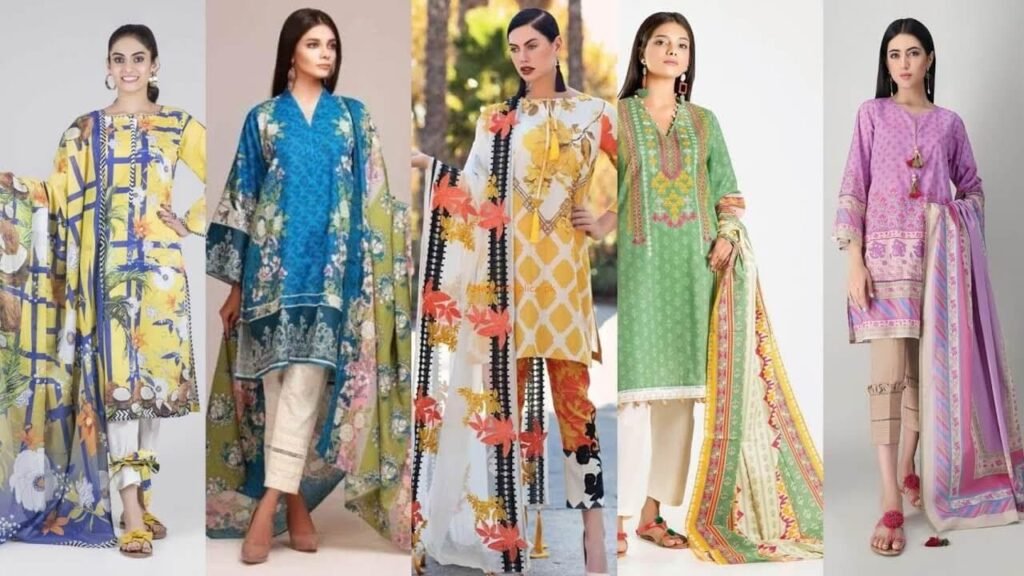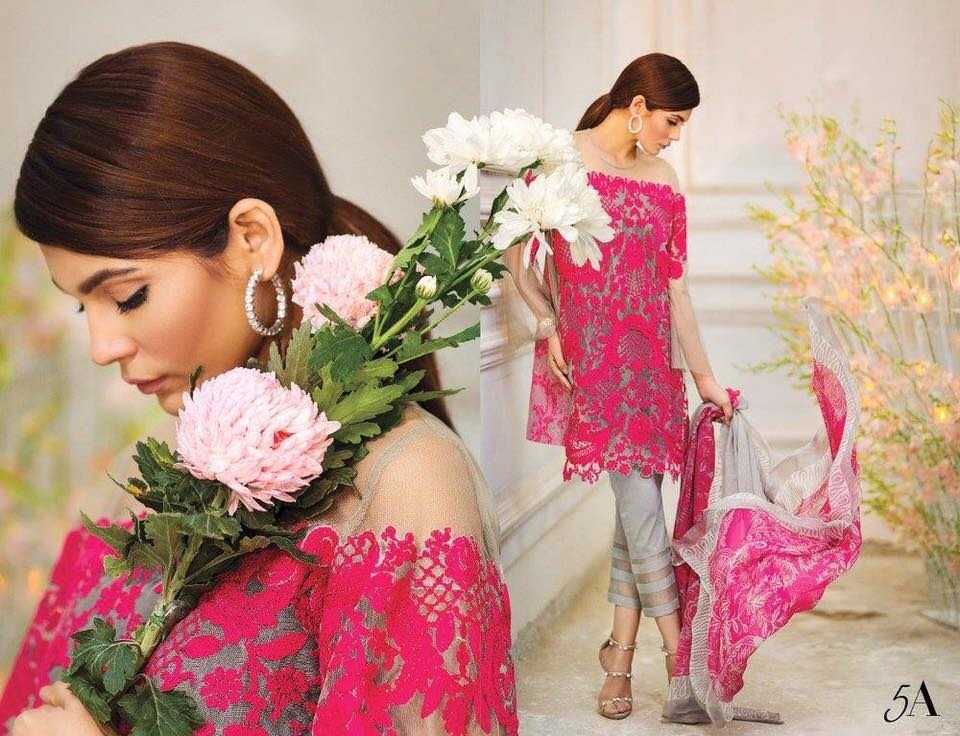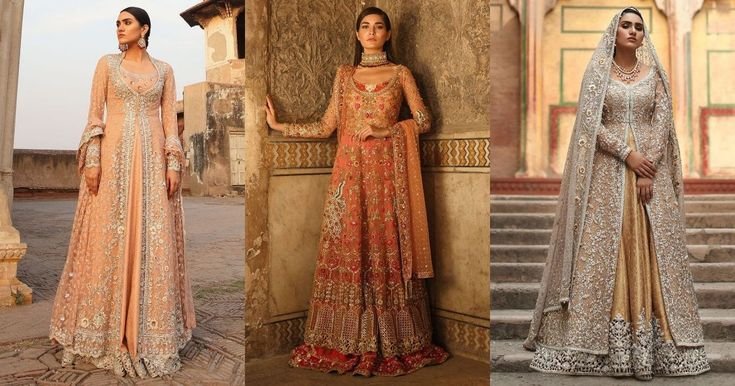The world of fashion is a dynamic realm that constantly evolves, and Pakistani fashion stands as a testament to this ever-changing landscape.
With a rich tapestry of culture, history, and innovation, Pakistan has been making its mark on the global fashion scene in recent years. This article delves into the captivating world of Pakistani fashion, exploring the latest trends and highlighting some of the prominent brands that are shaping the industry.
A Cultural Melting Pot: The Essence of Pakistani Fashion
Pakistani fashion is a fusion of tradition and modernity, capturing the essence of the nation’s diverse cultural heritage. Rooted in centuries-old craftsmanship and indigenous textiles, it seamlessly integrates contemporary aesthetics, creating a unique blend that appeals to fashion enthusiasts worldwide.
Revival of Traditional Crafts
One of the standout features of Pakistani fashion is its commitment to preserving and promoting traditional crafts. From intricate hand-embroidery like ‘kantha’ and ‘gota’ work to age-old techniques like ‘block printing’ and ‘ajrak,’ Pakistani designers have embraced these crafts, infusing them with a modern twist. This revival not only celebrates the country’s heritage but also provides employment opportunities for local artisans.
Contemporary Silhouettes and Innovative Design
While traditional techniques remain a cornerstone, Pakistani fashion has also embraced modern design sensibilities. Designers experiment with contemporary silhouettes, asymmetrical cuts, and innovative draping techniques. This fusion of tradition and modernity has given birth to a unique aesthetic that resonates with a global audience.
The Rise of Kurtis: Redefining Pakistani Fashion
In the ever-evolving world of Pakistani fashion, the rise of kurtis has ushered in a new era of style and comfort. Kurtis, a shorter tunic-length top, has emerged as a versatile and popular garment that effortlessly bridges the gap between tradition and modernity. This trend has captured the hearts of fashion enthusiasts across the country and beyond, making it a defining element of contemporary Pakistani fashion.
A Fusion of Tradition and Modernity
Kurtis encapsulate the essence of the fusion between traditional and modern fashion. Rooted in the rich heritage of South Asian clothing, kurtis are a reinterpretation of the classic ‘kurta’ with a modern twist. This fusion allows individuals to maintain a connection with their cultural roots while embracing the convenience and elegance of modern attire.
Versatility and Adaptability
One of the reasons behind the widespread popularity of kurtis is their versatility. These garments can be paired with a variety of bottoms, such as jeans, leggings, trousers, or even skirts. This adaptability makes kurtis suitable for various occasions, from casual outings to formal events, providing wearers with a diverse range of options without compromising on style.
Expressing Individuality
Kurtis offer wearers the freedom to express their individuality and personality through fashion. With an array of designs, patterns, and embellishments available, individuals can curate their own unique looks that resonate with their personal taste. From minimalistic designs for a sophisticated look to vibrant prints for a bold statement, kurtis provide a canvas for self-expression.
Other Fashion Trends in Pakistan
Sustainable Fashion
In recent years, sustainability has become a driving force in the fashion industry, and Pakistan is no exception. With a renewed focus on eco-friendly materials, ethical production processes, and conscious consumption, Pakistani designers are actively contributing to the sustainable fashion movement. Organic fabrics, upcycling, and reduced waste are at the forefront of this trend.
Bold Prints and Vibrant Colors
Pakistani fashion is known for its vibrant and bold use of colors, often drawing inspiration from the country’s landscapes and cultural motifs. Intricately designed prints, such as florals, geometric patterns, and paisleys, are featured in both traditional and modern ensembles. This play with colors and patterns adds a sense of liveliness and energy to the fashion scene.
Fusion of Eastern and Western Elements
Another noteworthy trend in Pakistani fashion is the seamless integration of Eastern and Western elements. Traditional attire like the ‘shalwar kameez’ and ‘lehenga choli’ are given a contemporary twist by incorporating Western-style cuts, embellishments, and accessories. This fusion caters to the evolving preferences of a diverse clientele.
Brands That Define Pakistani Fashion
Maria B: Pioneering Elegance and Innovation
In this era of kurtis’ ascendancy, Maria B has emerged as a leading force in redefining Pakistani fashion. With her unparalleled creativity and attention to detail, Maria B’s designs have become synonymous with timeless elegance and innovation. Her kurti collections seamlessly blend traditional craftsmanship with contemporary trends, capturing the hearts of fashion enthusiasts around the world.
Maria B’s kurtis are a testament to her dedication to quality and aesthetics. From delicate embroidery to intricate embellishments, each piece is a work of art that exudes grace and sophistication. By infusing her designs with a modern flair, Maria B ensures that her kurtis are not just garments, but expressions of individuality and confidence.
With an unyielding commitment to delivering excellence, Maria B has contributed significantly to the rise of kurtis in Pakistani fashion. Her brand stands as a beacon of style, setting new standards for elegance and creativity within the fashion industry. As kurtis continue to reshape the landscape of Pakistani fashion, Maria B remains at the forefront, inspiring countless individuals to embrace this trend with grace and confidence.
Sana Safinaz
Sana Safinaz is a powerhouse in the Pakistani fashion industry, celebrated for its dynamic blend of traditional aesthetics and modern design. Renowned for their luxurious fabrics, intricate embellishments, and innovative cuts, their collections consistently showcase a harmonious fusion of tradition and trendiness.
Elan
Elan is synonymous with opulence and elegance. The brand’s collections exude grace and sophistication, often incorporating rich fabrics, intricate embroidery, and a refined color palette. Elan’s creations are sought after for bridal wear, setting new standards in bridal couture with each collection.
Generation
Generation stands out for its commitment to authenticity and sustainability. Rooted in the philosophy of ‘crafting tomorrow,’ the brand reimagines traditional crafts for the contemporary world. With a focus on comfortable silhouettes and organic materials, Generation’s creations are both fashion-forward and socially responsible.
Khaadi
Khaadi’s appeal lies in its celebration of indigenous textiles and handwoven fabrics. From casual wear to formal attire, Khaadi offers a wide range of options that pay homage to Pakistan’s rich textile heritage. The brand’s versatility and attention to detail make it a favorite among all age groups.
The Global Impact
Pakistani fashion has transcended geographical boundaries and is making a significant impact on the global stage. The fusion of culture, tradition, and innovation, coupled with the country’s skilled craftsmanship, has earned Pakistani designers a dedicated following around the world. Fashion enthusiasts are drawn to the unique narratives woven into each creation, as well as the dedication to preserving cultural heritage.
In conclusion, Pakistani fashion is a vibrant tapestry that weaves together the old and the new, the traditional and the contemporary. With a focus on sustainable practices, a bold use of colors and prints, and a harmonious fusion of Eastern and Western elements, the fashion landscape in Pakistan continues to evolve. As brands like Sana Safinaz, Elan, Generation, and Khaadi lead the way, Pakistani fashion promises to captivate and inspire fashion lovers for generations to come.




